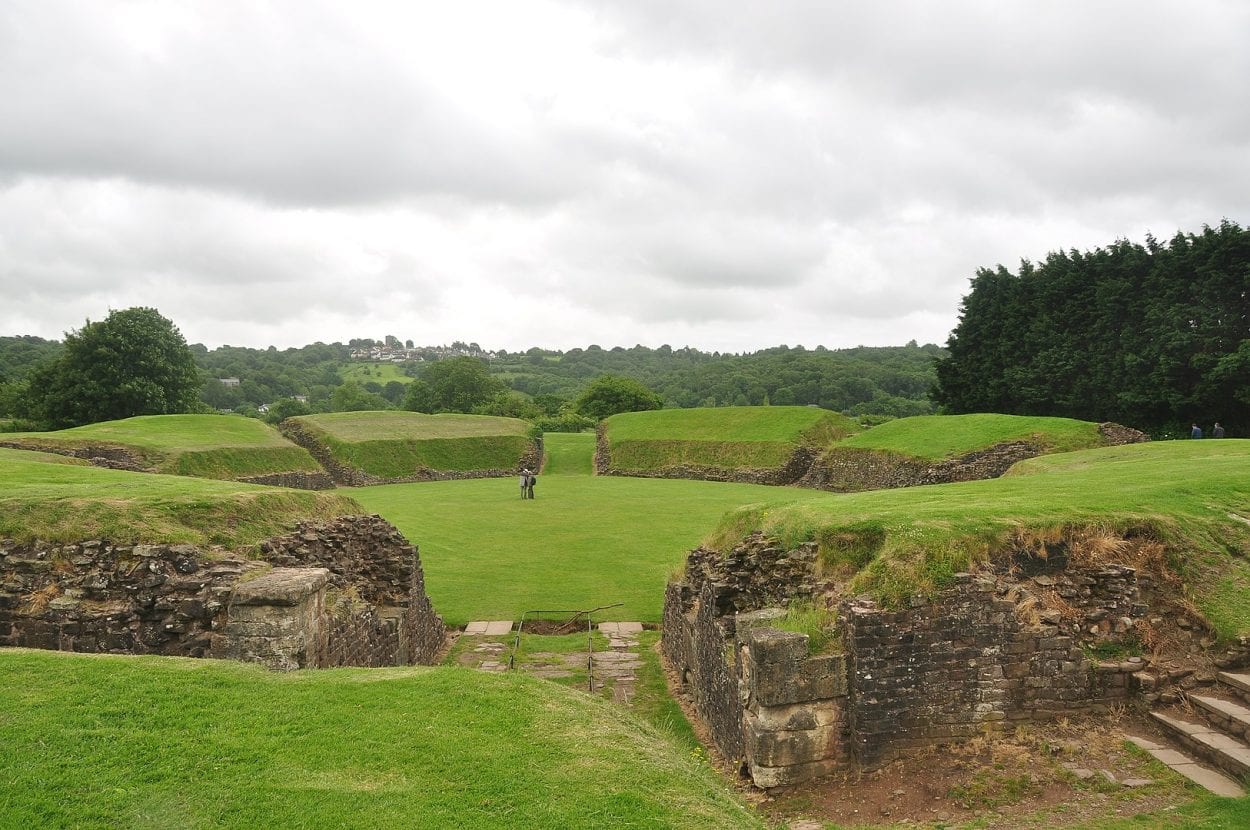Isca Augusta, also called Isca Silurum, and Carleon Roman Fortress is an archaeological site and the remains of a large legionary fortress located in present-day Carleon, Wales.
Isca Augusta was founded around AD 74 by the then governor of Britain, Sextus Julius Frontinus, to support the Roman campaigns in subjugating the native tribes of Wales that had resisted Roman rule.
The early fort would mark the foundations of one of only three permanent legionary fortresses constructed in Britannia (other legionary bases were moved according to strategic necessity), with Isca Augusta being the main headquarters of the Legio II Augusta (Legio Secunda Augusta, “Augustus’ Second Legion”).
The Legio II Augusta dates back to the late Republican era, and had campaigned in Hispania Tarraconensis during the Cantabrian Wars, Germania during Germanicus’s war against the Germanic tribes, and was one of the four legions used during Claudius’s invasion of Britannia.

Isca Augusta was constructed in the typical legionary “playing-card” shape that covered an area of 50 acres, using turf, clay, and timber for a wooden palisade. By around AD 100, these fortifications were replaced with stone walls and towers, with the addition of a stone revetment. By this period, most of Wales was under Roman occupation, with the fortress serving as the regional headquarters for 5,000 soldiers, supported by a series of smaller forts dotted across southern Wales.
The interior followed the standard plan for contemporary legionary fortresses, totally self-contained, and laid out with long narrow barrack-blocks to house the main garrison, with supporting bathhouses, a hospital, workshops, blacksmiths, and granaries.
Outside the western approach, a large oval amphitheatre was constructed (known locally in folklore as “King Arthur’s Round Table”), with studies revealing a multi-phase structure built on raised earthen foundations with masonry walls.

The fortress remained in continuous use until around AD 300, when the main structures were demolished, possibly as a result of the usurpers Carausius or Allectu’s attempt to seize power in Britannia.
Some of the buildings continued to be occupied as late as AD 380 (most likely by inhabitants of the adjacent vicus), with the Notitia Dignitatum documenting the redeployment of Legio II Augusta to Rutupiae (Richborough Castle) during the 4th century.
Header Image Credit : Nilfanion – CC BY-SA 4.0







